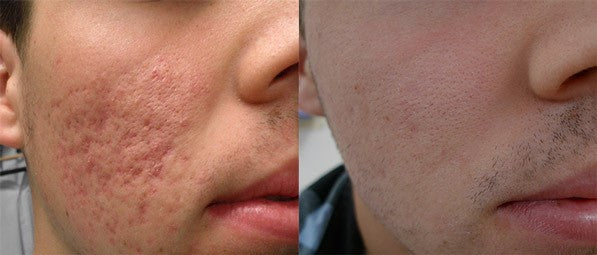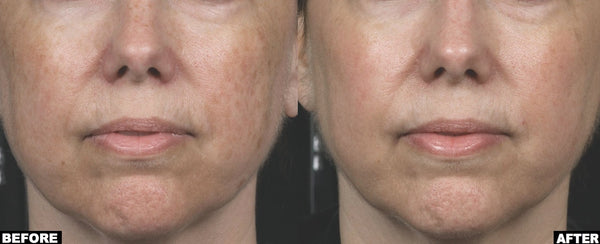Nonablative Resurfacing Lasers
What They Treat: Moderate sun damage, melasma, minor scars
How They Work: Here we're talking surface-sparing fractional lasers, and picosecond lasers outfitted with something called a diffractive lens, which essentially fractionates, or breaks up, the beam. (These tools cover widespread areas, not lone spots, and are appropriate for most skin types.) "Their main role is to refresh and rejuvenate by building new collagen, helping to smooth the skin, and eliminating some of the pigment that comes from sun damage," says Chapas.
Engineered to curtail downtime, fractional lasers hit the skin in a pixelated pattern, with some columns receiving a dose of light, and others going untouched. Picosecond devices deliver varying intensities of energy across the skin, "creating a vibration [rather than heat], which triggers cell signaling and the production of new collagen," Anolik explains.
One's tool of choice depends largely on what’s being treated. Baby fractional lasers, such as the Fraxel Clear + Brilliant, transmit minimal energy for a striking radiance boost, but only subtle textural improvements. (This gentle treatment is Anolik's go-to for melasma.) Picosecond lasers are a step up, as "they go a little deeper, and have more of an effect on fine lines, wrinkles, and scarring," notes Chapas. A stronger fractional laser, like the Fraxel Dual, is made for "someone who got too much sun in her youth, but started wearing sunscreen in her 30s or 40s, as its wavelengths can correct significant, not deep, UV damage on the face, neck, chest, arms, and hands," says Waldorf.
The Dual's more superficial 1927 wavelength tackles pigment, pores, fine lines, and even precancerous lesions; its 1550 wavelength attacks deep wrinkles and scars. (Why, yes, close readers, we did say that longer wavelengths go deeper. And 1927 > 1550. But according to Anolik, “penetration depth increases with wavelength only up to about 1300 nm, at which point, it decreases due to the intense absorption of longer wavelengths by water.”)
What They Feel Like: Dermatologists may offer numbing cream before baby fractional and picosecond procedures, but you can probably tolerate the prickly zaps without it. More potent fractional devices demand a full hour of topical numbing, plus acetaminophen or ibuprofen beforehand, and even then, you may need to breathe your way through the treatment’s hot static-like shocks. Vibrating massage cushions and nitrous oxide can further distract from the discomfort, notes Waldorf.
Downtime: Maybe an hour of flushing and one day of sandpapery dryness follow the mild resurfacers. With the dialed-up Dual (or equivalent laser), skin typically looks red right after, then bronze, flaky, and dirty for up to a week as tarnished cells are shed.
Risks: All of the aforementioned risks apply here. Additionally, fractional lasers can trigger herpes outbreaks in those who are prone, which is why doctors give a precautionary dose of an antiviral drug, like Valtrex, before the procedure. Acne and eczema flares can occur, too. “Those with a history of eczema are also at risk for a bacterial colonization of the nose, which can, in turn, increase the odds of infection on all treated skin post-Fraxel,” Waldorf warns. Inform your dermatologist of any preexisting skin-specific or general medical conditions before getting lasered.
Price: $500 to $2500 depending on the laser used
Results:

Courtesy of Australasian college of Dermatologists

Courtesy of Union Square Laser Dermatology
(Featured Image Courtesy of Skinceuticals)
Author Jolene Edgar

